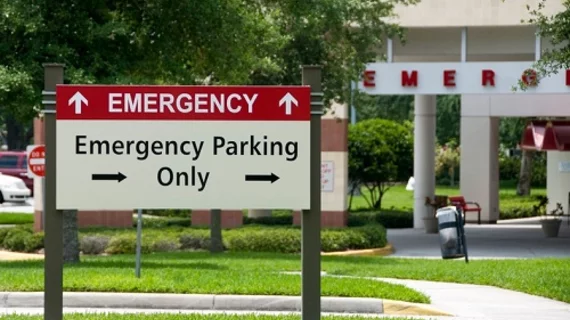It’s been 33 years since the federal government began requiring hospitals to take in patients after stabilization in the emergency department if the case called for admission and the hospital had the clinical expertise to provide the extended care. Yet Medicaid patients and the uninsured still have higher odds of getting transferred than those with high-quality insurance plans.
So found Yale researchers when they analyzed 215,000 ED visits to 160 U.S. hospitals. Arjun Venkatesh, MD, MBA, and co-authors published their findings online April 1 in JAMA Internal Medicine.
Focusing on cases involving pneumonia, asthma and COPD—three common conditions for which highly specialized care is usually not necessary—the team found the suspect transfers to other hospitals held after accounting for the transferring hospital’s critical-care capability as well as its patient-case mix.
“[U]ninsured patients who were discharged or transferred from an emergency department with pulmonary disease appeared to not have access to the same level of hospital care as was available to privately insured patients,” the authors commented.
Venkatesh and colleagues noted their findings are consistent with previous research identifying financial incentives as likely factors in many hospitals’ admissions patterns.
What’s more, in the present study, uninsured patients were much more likely than those with coverage to be discharged from the ED altogether. Even after risk adjustment, the uninsured had only around half the admission rate of the privately insured.
This “was an unanticipated finding,” the authors wrote, “given the relatively standard clinical guidelines used for hospitalization decisions for the common pulmonary conditions studied.”
The authors acknowledged as a limitation in their study design the use of administrative data with few details on illness severity and bed availability.
It was also not possible to quantify the extent to which decisions not to admit owed to the patients’ stated desires, whether financially driven or otherwise.
In any case, Venkatesh et al. call for a renewed look at ED patient-transfer incentives.
“More than three decades after the passage of the Emergency Medical Treatment and Active Labor Act [of 1986], we found differences in access to hospital care based on patient insurance status, suggesting a unique modern-day barrier to hospitalization for common medical conditions,” they wrote. “Policymakers should broaden the scope of hospital quality, payment and certification initiatives to reduce these disparities and improve access to hospital-based care.”

